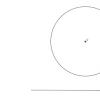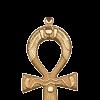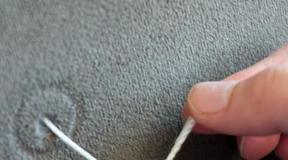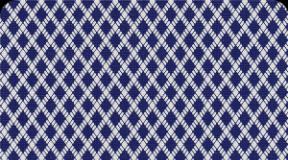Is lard harmful to the pancreas? Fat and pancreas. When can you eat lard if you have pancreatitis?
Pork lard, or lard, is an easily digestible and very high-calorie animal food product: 100 grams contains 800 kilocalories. In terms of energy value, it is in second place after fish oil (902 kcal/100 grams), and in terms of taste it is much superior to the latter. You can keep it edible for a long time: smoke it, pickle it or marinate it - and each of these delicacies has its own taste. But with exacerbation of pancreatitis, a strict diet is necessary, and lard is not among the allowed foods.
Benefit or harm?
Some healthy eating enthusiasts believe that eating bacon is definitely harmful due to its high cholesterol content, but scientists do not agree with them. Research proves that this delicacy is a source of valuable nutrients that the body needs for normal functioning. Subcutaneous pork fat contains a number of unsaturated fatty acids:
- palmitic;
- oleic;
- linoleic;
- linolenic;
- arachidonic
All these acids, which are important for cleaning blood vessels from cholesterol plaques, cannot be produced by the body on its own - they come from food, and lard is the main source. Based on acids, vitamin F is produced, which is responsible for regulating the level of lipids (fats) in the blood and preventing the accumulation of excess. Carotene and vitamins A, D, E contained in bacon are important for hematopoiesis. Fresh and salted lard has choleretic properties, helps normalize stool, improves vision, skin condition and has a beneficial effect on reproductive functions. Selenium, another rare element from which this product is sourced, has a strengthening effect on the immune system.
The digestibility of pork fat is higher than that of margarine and butter, and in terms of arachidonic acid content it is twice as high as butter. The daily amount of animal fat a person needs is 30–50 grams.

Fat in the acute phase
Despite its beneficial properties, pork fat is not one of the permitted types of food, since a large number of enzymes are involved in the digestion process, and in order to assimilate this healthy delicacy, a healthy digestive system is needed. The answer to the question whether it is possible or not to eat lard during pancreatitis during the period is clearly negative, since during inflammation the organ needs a gentle mode of operation. Eating fatty foods at this time leads to:
- to increased secretion of hydrochloric acid by the stomach, necessary for digestion;
- increased outflow of bile and entry into the pancreatic ducts;
- swelling and irritation of the organ mucosa;
Therefore, lard for the pancreas in acute pancreatitis is not only undesirable, but is strictly contraindicated - even in the smallest doses. The salty version is especially dangerous, since salt attracts water, creating conditions for the development of an inflammatory focus. In addition, the product increases the fat content of bile, and frequent consumption can provoke the appearance of calculi (stones) in the bile ducts.
During the remission phase of pancreatitis
Unfortunately, it is impossible to cure pancreatitis, but with the right therapeutic approach, the exacerbation is replaced by a period when the painful symptoms first become less intense and then disappear. Remission lasts from several months to several years. In this state, there is no need to follow a strict diet. Along with other dishes prohibited during the acute phase, you can eat this dish, following certain rules:
- The delicacy must be fresh, that is, without a long shelf life, preferably purchased from a retail chain that can guarantee this requirement.
- The recipe for preparing the delicacy should not include hot spices and large amounts of salt, and smoking or frying is not recommended - all this increases the load on the pancreas.
- You need to start with minimal portions - no more than 15-20 grams in the form of thinly sliced slices.
- It is better to eat bacon for breakfast, then an active lifestyle during the day helps the digestive system process it.
In the absence of a negative reaction from the body, the one-time volume of consumption can be doubled, but it is not recommended to add the delicacy to the menu more than once or twice a week. The food should not be combined with other fatty or fried foods, or seasoned with mustard, pepper and other hot spices.
What is the harm of the product for a patient with pancreatitis?
Giving a lot of energy, the product itself requires a lot of effort from the body to assimilate. The need to digest the refractory fats included in its composition forces the gland to work with increased intensity. When an exacerbation occurs on this basis, it leads to a number of negative consequences:
- An excess of secreted enzymes causes increased inflammation, which is accompanied by severe pain in the left hypochondrium and upper abdomen, sometimes of a girdling nature.
- If the process is not stopped over a long period, this provokes a decrease in the level of functional activity of the gland in the tissues.
- The consequence of the disease can be the development of diabetes mellitus and other serious pathologies, so the situation should not be neglected.
When diagnosing chronic inflammation of the pancreas, adherence to a strict diet during periods of exacerbation is the basis of treatment of the disease. All foods that contribute to the development of the pathological process, including pork fat, are removed from the patient’s menu.
How to choose the right product and store it?
When choosing a product, you need to pay attention to the appearance - it will tell an experienced buyer a lot:
- A yellowish tint is the main sign of age: it means that the animal was not young and the fat was hard.
- The gray color indicates that the delicacy was stored for a long time and “weathered” before being sold. Such a product cannot be called spoiled, but its taste is much worse than fresh. A good piece should have a white or pinkish tint.
- The skin also matters: if it is thin, soft, it can be cut without effort. The thick and rough skin, on which remains of bristles are visible, confirms the advanced age of the animal.
- The thickness of the meat layer on a piece of bacon taken from the sides is no more than 5% of the total thickness. If there is more meat, the bacon was taken from the underbelly, cheeks or neck of the carcass, and is not suitable for salting.
If storage is intended, the purchase is placed in the freezer compartment of the refrigerator, wrapped in food paper (not cellophane!). When frozen, the product retains its beneficial properties and is easily cut into slices.
How to make lard that won't harm you

It is better for a patient with pancreatitis in remission to eat a delicacy prepared in a dry way. This requires:
- Cut into pieces and rub thoroughly with salt. It is impossible to over-salt: the product will take as much salt as necessary, the excess remains on the surface of the piece, and is cleaned off with a sharp knife before use.
- Place in prepared container, clean and dry.
- Cover the dishes and take them to a cool place, or put them in the refrigerator (but not in the freezer).
After 7–8 days, the food will be salted. Add pepper and garlic carefully or not at all. You can store salted lard, like fresh lard, for a long time, but the longer the storage period, the less useful substances remain in the delicacy.
Bibliography
- Bolshakov A.S. Selection of the optimal mode of heat treatment of meat and meat products. Meat industry of the USSR 1976 No. 10 pp. 34–37.
- K. Brown. Oils and fats, ed. D. N. Artemyeva. Science and Life, 1924, pp. 17–20.
- A book about tasty and healthy food edited by I. M. Skurikhin. 12th ed., revised and expanded. M: AST-PRESS SKD 2004
- Antipova JI.B., Zherebtsov N.A. Biochemistry of meat and meat products. Voronezh, VSU Publishing House 1992
Without fats, which are part of food, the normal functioning of the human body is impossible. The main source of animal fat is lard; recently it has become the object of close observation by nutritionists and many doctors.
Lard lovers are confident that the product is irreplaceable and benefits the body; opponents cite many arguments about the harmful effects of lard on health. Especially many questions arise about the use of lard for various diseases of the digestive system.
So is it possible to use lard for pancreatitis and similar disorders of the gastrointestinal system?
What are the benefits of lard?
Lard has a rich composition; its biological value is higher than that of butter. It is known that the product contains many acids necessary for the production of vital hormones, adequate functioning of the liver, brain and adrenal glands.
Arachidonic acid helps fight inflammation, colds, and bronchitis. Lard will become indispensable in eliminating pain in joints and muscles.
It also contains a number of useful substances, thanks to which it is easily and quickly absorbed by the body:
- fats (unsaturated and saturated);
- minerals (phosphorus, selenium, zinc, copper);
- vitamins (B, C, D, E, A).
Pork lard helps strengthen the immune system; the presence of cholesterol is indispensable in the development of cell membranes. Selenium is needed to strengthen the cardiovascular system; the substance is an excellent antioxidant and protects against various types of damage. It is selenium deficiency that is most often diagnosed.
The product combines harmful toxic substances and radionuclides and promotes their removal from the bloodstream. Fatty acids eliminate excess body weight and cholesterol plaques in blood vessels. Doctors assure that lard will be a good prophylactic agent that protects against the development of cancer.
Lard is eaten with other foods, vegetables, cereals and bread. But we must not forget that to obtain benefits, you need to consume it in moderation. For some diseases, the product should not be eaten at all; it will only cause harm.
Some supporters of alternative medicine claim that lard can treat pancreatitis and fight pain. For treatment, take a small piece of lard, eat it on an empty stomach, washed down with sweet hot tea.
However, this method of getting rid of the disease is very doubtful; it is better not to risk your health and not practice it.
In the acute phase
Sugar level
In the acute course of the disease, complaints and the severity of symptoms can be different, but doctors have grouped all the signs into several syndromes: pain, compression, hormonal disorders, intoxication, enzyme deficiency, disruption of the stomach.
When the inflammatory process is acute or an attack of pancreatitis occurs, the patient is recommended to adhere to a special diet, which can become a measure to prevent complications of the disease and relieve severe symptoms.
In the first days of illness, it is allowed to drink only clean water without gas; only on the third day does the doctor allow the inclusion of gentle foods, crushed and homogenized, in the diet. But bacon, even in small quantities, is prohibited; it is dangerous for the patient and will complicate the course of the pathological process.
If you do not listen to the doctor's advice, a person:
- will face undesirable consequences;
- the focus of inflammation will increase;
- The swelling of the walls of the affected organ will increase significantly.
The production of pancreatic enzymes will also increase, which once again has a destructive effect on the pancreas.
In addition, there is an increase in the outflow of bile, the likelihood of its penetration into the pancreatic ducts increases, and there is an increase in the activity of pancreatic enzymes.
Use during remission
Is it possible to eat lard with pancreatitis if the inflammatory process has not made itself felt for a long time, there have been no attacks of pain for more than three months, the stage of the disease is chronic? Nutritionists allow the use of bacon in small quantities in case of chronic pathology; it is recommended to limit yourself to a couple of pieces of the product. This will allow you to slightly diversify your usual diet and prevent complications of the disease.
It is forbidden to combine lard with fried, spicy and fatty foods, otherwise a new round of pancreatitis cannot be avoided. Moreover, the patient is allowed to pamper himself with lard no more than once a week. Even despite the obvious improvement in well-being, you need to carefully monitor the body’s reaction to such food.
You can only eat fresh lard; stale lard does not contain anything useful and irritates the digestive tract. You should buy salted bacon from trusted sellers who are responsible for the quality of the products.
When the inflammatory process in the pancreas has not been activated for a long time, this does not mean that you can eat everything. With constant consumption of large amounts of lard, there is a high probability of:
- the occurrence of stones in the biliary tract (associated with an increase in the fat content of bile);
- liver dystrophy;
- increase in body weight.
The pancreas also suffers from fatty liver. The optimal time to consume lard is breakfast; in addition to useful substances, it will give you a boost of energy for the whole day, since the calorie content is about 800 kilocalories for every hundred grams.
A morning slice of lard will be useful for better discharge of bile that has accumulated overnight, thanks to this the body is cleansed.
We are used to eating not only salted lard, but also smoked, pickled, fried and boiled lard. It should be noted that the harm of a product is almost always determined by the method of its preparation.
It is optimal to eat salted bacon, since fried and boiled dishes contain carcinogens that are hazardous to health and negatively affect the functioning of the heart muscle and kidneys. In addition, these substances cause obesity, which is quite difficult to get rid of in case of pancreatic diseases, especially when type 2 diabetes mellitus is also diagnosed.
Is it possible for gastritis? Patients with gastritis are allowed to eat lard, but also in moderation and during a period of prolonged remission. In the acute phase, it is better to completely abandon it. When consuming salted lard, you should not forget that it contains a lot of spices and salt; spices have a negative effect on the secretion:
- bile;
- gastric juice;
- and enzymes.
For this reason, the product is prohibited for cholecystitis and cholelithiasis.
Doctors say that eating salted lard with gastritis with high acidity is completely prohibited; with low acidity, consumption is allowed.
Even if the patient suffers from hyperacidity and eats a small piece of salted bacon, nothing bad will happen. But in other foods, in this case, you will need to be more rigid.
With an increased amount of gastric juice, the gastric mucosa suffers.
What is the harm of lard?
 Fresh and salted lard is a rather fatty product and contains a lot of calories. If you consume only 100 grams of lard, the human body immediately receives a daily portion of animal fat. It is logical that with regular eating, the patient faces an increase in body weight.
Fresh and salted lard is a rather fatty product and contains a lot of calories. If you consume only 100 grams of lard, the human body immediately receives a daily portion of animal fat. It is logical that with regular eating, the patient faces an increase in body weight.
When not only this fat is included in the menu, there is a risk of overeating the norm of fat, which provokes obesity of internal organs and an increase in the amount of subcutaneous fat. Despite the vitamins mentioned, their quantity in the product is small; lard should not be considered as their source. If you have diseases of the liver, kidneys, or gall bladder, it would not hurt to consult a doctor.
If health is important to the patient, he should buy exclusively fresh product; in salted form it can be stored for a long time; the longer this happens, the less useful substances remain in it.
Smoked types of product are produced in industrial conditions using chemicals, and little good remains from it.
How to select and store
How to determine a truly useful product? When purchasing, you should pay attention to a number of factors, such as appearance. If there is a yellowish tint, we can safely say that the animal was old; a gray tint indicates staleness. The best option is a piece of white or slightly pink color.
It is also necessary to inspect the skin; in good fat it is soft, cuts and pierces without effort. The remaining bristles and thick skin will tell about the animal’s advanced age. You also need to smell the piece of bacon you like; it should have a characteristic meaty smell.
They also look for the presence of layers of meat; the ideal lard is removed from the sides of the carcass and from the backbone. There is practically no meat on it, the product is good for pickling. The worst quality is a piece from the peritoneum; the thickness of the meat layer should not exceed five percent. Tougher fat from the animal's cheeks, neck and head, it also contains layers of meat.
Lard can be salted dry using:
- barrel;
- jar;
- saucepan.
To prepare the product, rub it on all sides with salt, preferably iodized, adding spices to taste that are allowed for the inflammatory process in the pancreas. The bacon will take exactly as much salt as needed.
If you want to preserve lard longer, it is better to freeze it; the finished product is wrapped in food paper and placed in the freezer. The advantage of frozen bacon is that it stores its beneficial substances for a year or more. When frozen, it is easier to cut into slices. Fresh lard is stored only frozen.
Each patient with pancreatitis must draw the appropriate conclusions for himself; in the acute course of the disease, and especially in cases of pancreatitis, lard is contraindicated for absolutely all patients; in chronic cases, it is eaten in small quantities, following the recommended diet. If adverse reactions occur, the product should be discarded.
The benefits and harms of lard are discussed in the video in this article.
Pancreatitis is inflammation of the pancreas. With this disease, the gland produces an excess of digestive enzymes, which are designed to process food debris in the intestines.
Enzymes are retained in the pancreas and begin to recycle(essentially destroy) its cells. This process is called self-digestion.
There are several reasons for the activation of enzymes, but the main one is alcohol consumption and diet.
Some foods literally provoke pancreatitis. Today, in this regard, we will talk about lard.
In excessive quantities, like any product, it will not bring any benefit and will actually be harmful. But When used wisely, lard is beneficial for any disease, including with pancreatitis.
 Let's start with the fact that lard in animals (specifically now in domestic pigs) is formed for a reason. This is, in essence, a food reserve in case food disappears. Can it be harmful?
Let's start with the fact that lard in animals (specifically now in domestic pigs) is formed for a reason. This is, in essence, a food reserve in case food disappears. Can it be harmful?
Interesting! Pork lard is a rare product that contains arachidonic acid, a substance that has a pronounced anti-inflammatory effect. A small piece of lard eaten in the morning perfectly starts the gastrointestinal tract and saturates the body with energy.
It is believed that this product overwhelms the body with cholesterol. In large quantities - yes.
But small pieces of it contain little cholesterol, but there is a carboxylic acid, which destroys cholesterol.
Is it possible or not?
 Some time ago, most doctors clearly rejected the use of this product for inflammation of the pancreas. The fact is that enzymes are activated when a product enters the body, the breakdown of which requires additional energy.
Some time ago, most doctors clearly rejected the use of this product for inflammation of the pancreas. The fact is that enzymes are activated when a product enters the body, the breakdown of which requires additional energy.
This is alcohol (it needs to be removed as soon as possible), spicy food (if it is not broken down quickly, it will begin to destroy the mucous membrane), and finally, this is fatty food, which is difficult to recycle.
It would seem that lard is this very fat. But I already said above that in small quantities this product can clearly be useful. And saturating the body with energy is necessary for any illness.
Important! The anti-inflammatory properties of arachidonic acid are absolutely irreplaceable if it is necessary to stop the inflammatory process in the pancreas.
For what forms of disease can lard be consumed?
There are 2 forms of pancreatitis:
- acute; characterized by severe pain and vomiting. Diarrhea, fever, sometimes even surgical intervention is necessary for this condition;
- chronic; here, unpleasant sensations appear occasionally, after a violation of the diet or consumption of alcohol.
 During attacks of the patient’s illness, it is generally recommended to limit the consumption of any food, including lard. During the period of remission (relief of the condition), a few thinly sliced pieces of lard obviously will not harm.
During attacks of the patient’s illness, it is generally recommended to limit the consumption of any food, including lard. During the period of remission (relief of the condition), a few thinly sliced pieces of lard obviously will not harm.
Attentively! Adjust the number of these pieces yourself. But no more than 1-2. If you begin to feel slight nausea or heaviness in your stomach, limit your intake of the product.
How to choose and store correctly
 If you purchase a low-quality product, it will naturally only cause harm. When choosing lard in a store or market, pay attention to the following:
If you purchase a low-quality product, it will naturally only cause harm. When choosing lard in a store or market, pay attention to the following:
- yellowish lard has been stored somewhere for a long time even without a freezer;
- gray color indicates old age of the pig;
- the vein should not exceed 4 mm, if there is more meat, the lard is not taken from the “greasy” areas where it is most useful;
- the crust should be thin and transparent; a thick crust with traces of bristles indicates the animal’s advanced age.
Please note! If you choose a product for a patient with pancreatitis, it should not contain a lot of spices and garlic.
Lard should be stored in the freezer, wrapped in paper, but not in cellophane.
In what form can you use it and in what form can you not use it?
For pancreatitis, the product should only be eaten salted. It is strictly forbidden to take it in smoked form.
How to cook
The product should not be boiled, and even more so, fried. A You can add salt yourself. To do this, the shmat is generously rubbed with salt (you can’t overdo it here, the piece won’t absorb the excess), wrapped in paper and put in the refrigerator for about a week.
 Then it is cleared of excess salt and frozen. You can cut it and eat it.
Then it is cleared of excess salt and frozen. You can cut it and eat it.
Some tips:
- The doctor’s dietary instructions must be followed strictly;
- lard should not be consumed with other fatty foods;
- give up the mustard it is destructive for pancreatitis.
Useful video
Salo stimulates the functioning of the digestive glands.
Conclusion
As you can see, lard can also be healthy, and not at all a clot of cholesterol, if consumed and prepared correctly. You only need dose your diet correctly However, this is true for almost any product.
Today, the most familiar foods are becoming harmful, and those that were considered not the most healthy are turning into a real panacea - if you believe modern doctors of science, nutritionists, and gastroenterologists. This happened with lard. A source of cholesterol, the culprit of excess weight, it was considered tasty, but an evil enemy of healthy food. And today they convince us: it is allowed and recommended to be consumed, but properly prepared. Then lard will not harm, and will even help alleviate the condition of certain pathologies.
Even the freshest lard of the highest quality is not recommended for consumption if you have an unhealthy pancreas
Many doctors understand its benefits and do not deny it. But eating lard during pancreatitis is categorically not recommended: even in a state of stable remission, you should not enjoy salted, smoked, fried pork delicacies. Some believe that fresh, unsalted lard will do no harm if you eat a few slices from time to time. But they are wrong.
Lard is not a dietary product; it is fatty and high in calories. It is an animal product obtained from livestock (mainly pigs).
Its main components:
- choline;
- tocopherol;
- selenium;
- zinc;
- vitamin D

Refractory fats are the most harmful components of bacon, arachidonic acid is the most beneficial
The arachidonic acid in the composition makes it a useful addition to the daily diet. This substance is necessary for the formation of cell membranes; with its deficiency, the immune system begins to suffer, the process of cell regeneration slows down, the aging process of the body accelerates, and the risk of developing malignant tumors increases.
Lard is rich in fat-soluble vitamins, which are responsible for the good condition of the skin, hair, and nails. It contains components that cleanse the liver and pancreas, removing harmful toxins. It is generally accepted that the product increases cholesterol. It depends on the method of preparation and the quantity consumed.
The healthiest thing is fresh lard; the composition of salted lard varies somewhat. And in fried or smoked products, carcinogens are formed - the culprits of a number of deadly diseases.
How does it work for inflammation of the pancreas?
Lard products are not suitable for damaged pancreas. Nutrition for a patient suffering from pancreatitis is aimed primarily at eliminating pain, discomfort, normalizing digestion and pancreatic functions. To do this, the digestive system should be provided with minimal load. But lard, on the contrary, will overload it and cause a new round of disease.

For inflammation of the pancreas, lard is harmful in any form, especially if served with other strictly prohibited foods - hot spices, rye bread, strong alcohol
A small slice of fresh salted bacon in the acute phase of pancreatitis provokes such effects:
- active release of enzymes to digest fatty foods;
- irritation of the inflamed stomach and pancreas;
- stimulating the outflow of bile, which provokes additional secretion of pancreatic enzymes;
- increased inflammation, swelling and pain;
- nausea, bloating, diarrhea.
It is especially harmful on a piece of rye bread, with pepper, garlic, onions, fried with eggs, potatoes, and hot sauces.
Such delicacies with a diagnosis of “pancreatitis” cannot be allowed even after the transition of the acute stage of the disease to the chronic stage. In the phase of stable remission, when for 2-3 months the patient does not experience discomfort, pain, nausea, the digestive system is working normally, it is also better not to experiment: a small feast will lead to big complications.
Which varieties and products are most useful?
Lard can be added to the menu in small portions 1-2 times a week, provided that you have fully recovered from acute pancreatitis without becoming chronic. The product must be of the highest quality and first freshness.

You should choose white or white-pink lard with a meat layer of no more than 5%, a thin skin without stubble or spots
Select bacon according to the following criteria::
- exclusively home-cooked, without smoking, pickling, or salting;
- the pulp should be white, white-pink, without yellowness;
- characteristic smell - fresh fat, without a hint of rancidity;
- the skin should be thin, light, without bristles, and easy to pierce;
- meat streaks are allowed in a minimal amount; it is better to look for a piece without them.
Finding the right product is not easy. Ideally, lard lovers should find a person from the village who is willing to supply fresh lard immediately after the pig is slaughtered.
What else is important to know
It is recommended to store fresh lard in the freezer. At low temperatures, it does not lose its taste and nutritional properties for up to a year. It is easier to cut thin slices from a frozen piece. But before use, the lard must be warmed to room temperature. It is allowed to add salt (it is important not to constantly keep the product in brine and not to sprinkle it with salt for storage).
Fat in large quantities, even with stable remission, becomes a real poison and can provoke a new round of the disease, serious complications of pancreatitis. Overeating bacon during pancreatitis of any form leads to liver and pancreas dystrophy, increased cholesterol, and weight gain. Moderate consumption is permissible only if the pancreas is healthy: lard in this case will charge you with energy, lift your spirits, improve digestion, and cleanse blood vessels and bile ducts.
, at first glance, refer to foods and dishes that are not permitted for consumption. We decided to find out if this is really so. If they are dangerous, why? What harm does a small pancake and a slice of bacon do to the pancreas? Or maybe there are benefits from them?Is it possible to eat pancakes with pancreatitis?
Pancakes are a traditional attribute of the Maslenitsa celebration. In many families, they are baked not only to see off winter, but also without any reason. With butter, sugar, cottage cheese, caviar, berries, honey and even meat - the most popular variations, of which there are actually thousands. Cakes that use pancakes as the crust are becoming increasingly popular. And one of the most common snacks in recent years is pancake rolls made from vegetables and/or seafood, which are served hot or chilled along with all kinds of sauces. Delicious, isn't it?
 People diagnosed with inflammation of the pancreas or simply pancreatitis cannot afford to compose their menu so impressively, be it on an everyday or special day. Doctors urge you to approach your diet choice very carefully, and before you start eating, carefully study the medical recommendations regarding meals.
People diagnosed with inflammation of the pancreas or simply pancreatitis cannot afford to compose their menu so impressively, be it on an everyday or special day. Doctors urge you to approach your diet choice very carefully, and before you start eating, carefully study the medical recommendations regarding meals.
In case of an acute inflammatory process, complete avoidance of foods that can cause deterioration is indicated. These include any food that is difficult to digest: spicy, fried, salted, fatty, pickled, smoked, etc. Pancakes, during the preparation of which eggs and flour are mixed, salt and sugar are added, and also manipulations such as frying are performed are naturally prohibited during the acute phase of the disease.
Even when the pain has passed and the doctor has established remission, it is recommended to exclude pancakes from the diet so as not to overload the damaged gland. However, for avid lovers of this delicacy, a slight relaxation is allowed.
Such pancakes with a minimized risk of negative consequences are prepared according to a special recipe:
1000 ml. kefir with a minimum percentage of fat content;
2 pcs. eggs;
Approx. 145 ml. sunflower oil;
1.5 cups flour;
0.5 teaspoon of slaked soda;
Salt and sugar to taste.
At the first stage, divide the kefir into two equal portions. To the first of them add sunflower oil, soda, eggs, flour, sugar and salt. Mix thoroughly. Then add the remaining kefir to the resulting mixture and stir again. Heat the frying pan well, after greasing it with a small piece of butter. Don't forget that you don't need to add more oil when preparing the next batch. As soon as a crust forms on the pancake, reduce the heat and turn over to the other side.
It is important to eat a little at a time when eating such a delicacy for the first time. If there is no negative reaction in the form of pain, vomiting, flatulence, nausea, stool upset, etc., you can gradually increase the portions, but in moderation. It is not recommended for patients with pancreatic disease to eat more than five pancakes at a time. If you feel unwell, avoid pancakes altogether.
Is it possible to eat lard if you have pancreatitis?
Since time immemorial, lard has been included in various cuisines of the world, so do not consider it the prerogative of Ukrainians exclusively. Meanwhile, in case of pathologies of the pancreas in the acute phase, it is strictly prohibited, and there are several reasons for this:
Due to the high salt content, the inflammation continues to rage, as it literally nourishes it, attracting water.
The refractory fats included in its composition stimulate work, which are aggressive towards it.
Fat provokes increased bile secretion, forms cholesterol stones, and aggravates fatty degeneration of the liver and glands.
In case of established remission, when the symptoms of the disease do not make themselves felt for several years, lard is introduced into the diet with caution, consumed extremely rarely. Meanwhile, it can also have a positive effect on health: removal of toxins, energy saturation, fat-soluble vitamins, which make skin and hair look better, vision improves and reproductive function is restored, as well as selenium, which is responsible for maintaining the human immune system, etc. .



















